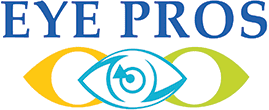Clear Vision for the Whole Family: Finding the Right Eye Doctor in Coeur d’Alene, Idaho
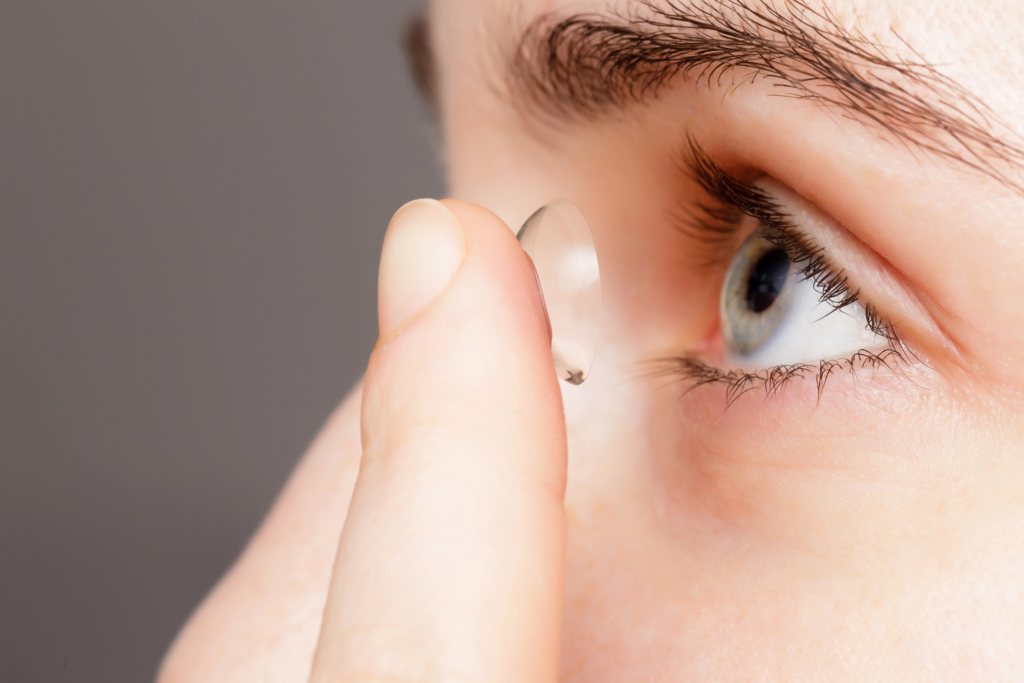
Looking for a trusted family eye doctor in Coeur d’Alene shouldn’t feel overwhelming. Between juggling busy schedules, insurance details, and keeping everyone in the family healthy, your eye care experience should be simple, supportive, and personalized. At Eye Pros Coeur d’Alene, we believe exceptional vision care starts with understanding your family’s unique needs. Whether it’s your child’s first eye exam, a contact lens fitting, or managing age-related vision changes, our team is here to make every visit comfortable, efficient, and stress-free. Why Routine Eye Exams Matter A comprehensive eye exam does far more than check your prescription. Early detection of conditions like diabetes, glaucoma, or macular degeneration can prevent long-term vision issues and support overall health. For children, early eye care can directly impact learning, focus, and development—helping them thrive both in and out of the classroom. Understanding the Roles in Eye Care Optometrists (OD): Provide comprehensive eye exams, prescribe glasses and contacts, and diagnose most common eye diseases. Ophthalmologists (MD): Medical doctors who handle surgical procedures and complex eye conditions. Opticians: Specialists who ensure your glasses fit comfortably and match your prescription perfectly. Recommended Eye Exam Schedule Adults: Every 1–2 years, or more often if recommended by your doctor. Children: At 6 months, 3 years, before kindergarten, and annually thereafter. Seniors: Once per year to monitor for age-related vision changes. At Eye Pros, we make it easy to schedule for the whole family—often back-to-back—to help you save time without sacrificing quality care. What to Look for in a Family-Centered Eye Clinic The best family clinics understand that life gets busy. Look for offices designed with families in mind—comfortable waiting areas, friendly staff who work well with kids, and flexible scheduling options. At Eye Pros Coeur d’Alene, we provide same-day appointments when possible and a welcoming environment where patients of all ages feel at ease. Same-Day Service: Convenience That Counts Our Coeur d’Alene office offers same-day exams, eyewear, and contact lens fittings, so you can update your prescription and leave seeing clearly—all in one visit. It’s a small detail that makes a big difference for busy North Idaho families. Pediatric Eye Care in North Idaho Children’s eye health is one of our top priorities. Our optometrists use gentle, kid-friendly testing methods to detect early signs of conditions such as amblyopia (lazy eye) and strabismus (eye misalignment). Watch for early warning signs like squinting, frequent headaches, tilting the head, or losing interest in reading—these may indicate your child needs an exam. Contact Lenses for Teens When your child is ready to switch to contact lenses (usually around age 12), we’ll walk them through proper lens care and hygiene. Our team often recommends daily disposable lenses—a safe, convenient option for active teens and first-time contact wearers. Making the Most of Your Vision Insurance Before your visit, confirm your insurance coverage and ask about self-pay discounts. At Eye Pros, we help you maximize your vision benefits and offer transparent pricing, so there are no surprises at checkout. Why Technology Matters Our Coeur d’Alene office uses advanced diagnostic technology, including digital retinal imaging, OCT scans, and computerized visual field testing. These tools help us detect potential issues early—long before symptoms appear—allowing for more effective treatment and prevention. Local Care vs. Big-Box Chains Choosing local means choosing personal. As a locally operated practice, Eye Pros Coeur d’Alene offers personalized care, shorter wait times, and continuity with the same doctors who know your family’s history. While national chains may advertise low prices, local care provides something bigger—trust, familiarity, and a long-term relationship focused on your vision health. Smart Questions to Ask When Choosing an Eye Doctor Do you have experience treating children and families? Can I schedule appointments for multiple family members on the same day? Which insurance plans do you accept? Do you offer same-day glasses or contact lens fittings? At Eye Pros, the answer to all of the above is yes. Helping Kids Feel Comfortable During Exams We know the first eye exam can be a big moment for little ones. Our Coeur d’Alene staff takes time to make the experience fun, positive, and reassuring. You can help by explaining the process simply and bringing along a favorite book or toy for comfort. Final Thoughts Choosing the right eye doctor in Coeur d’Alene isn’t just about convenience—it’s about care that grows with your family. At Eye Pros, we’re proud to offer: ✅ Same-day appointments and eyewear options ✅ Pediatric and family eye care expertise ✅ Transparent insurance and pricing ✅ Modern diagnostic technology ✅ Friendly, local professionals who care about your vision Your family deserves care that’s personal, efficient, and designed around your life. Eye Pros Coeur d’Alene is here to help you see life clearly—today and for years to come. FAQs How often should children get eye exams? At 6 months, 3 years, before school, and then yearly. Can families book together? Yes! Eye Pros makes it easy to schedule multiple appointments in one visit. Does every clinic accept all insurance? No—always confirm coverage before scheduling. When can kids start wearing contact lenses? Usually around age 12, depending on maturity. Is same-day eyewear really available in Coeur d’Alene? Absolutely! Eye Pros offers same-day options for both glasses and contact lenses.
Contacts in Coeur d’Alene: Real Talk About Comfort, Looks, and Not Getting Ripped Off

Why’s Everyone in Coeur d’Alene Ditching Glasses for Contacts? Seriously, take a walk downtown near Sherman Avenue or Tubbs Hill—you’ll notice tons of people enjoying that clear, glasses-free view of the lake. And honestly? It makes sense. Glasses get foggy, slide off your face when you’re hiking, boating, or chasing your kids through McEuen Park, and they can easily break when you’re out mountain biking on Canfield Mountain trails. Contacts, though? Pop ’em in and forget they exist. Go paddleboarding, play soccer, hit the slopes at Silver Mountain—no problem. If you’re the “always-on-the-move” type (or, let’s be real, just a little clumsy), contacts are a total win. No awkward sliding, no smushed frames under your ski goggles, no fogged-up lenses when you step inside from the cold. And let’s talk about confidence. Some folks simply feel better without glasses hiding their face. Plus, with color contacts available right here in Coeur d’Alene, you can change your eye color as easily as your outfit. Subtle look? Go for it. Wild vampire eyes for Halloween? Absolutely. No wonder locals are catching on. Daily vs. Monthly Contacts: Which Side Are You On? Alright—daily versus monthly contacts. It’s the eye-care version of the “Priest Lake vs. Lake Coeur d’Alene” debate. Daily contacts are the easy choice: wear once, toss ’em out, done. Perfect if you’re not into cleaning lenses (no judgment) or you’re always rushing out the door. Fresh pair every morning, no cases, no solution, no stress. Monthly contacts, on the other hand, are the budget hero. A little more care, but you’ll save money—especially if you’re buying for the whole family. Sure, dailies cost more upfront, but many Coeur d’Alene optometrists offer rebates, loyalty discounts, or bundle deals that narrow the price gap. Got allergies? Dailies can help. Prefer sticking to a routine (or just saving for ski season)? Monthlies might be more your vibe. Bottom line: choose what keeps your eyes happy and fits your lifestyle. The best way to know for sure? Book a contact lens fitting in Coeur d’Alene—a quick visit gives you personalized advice from a local expert who actually knows the area’s dry air, pollen, and lake-life factors that can affect comfort. Color Contacts in Coeur d’Alene: Change Your Look Without Sacrificing Comfort Color contacts aren’t just for drama kids or costume parties. You can enhance your natural shade or go bold without giving up clear vision or comfort. Special occasion? Wedding by the lake, themed party, or even a date night downtown—why not change things up? Just… skip the sketchy online sites. Those “no prescription” lenses for $6? Probably a fast track to pink-eye. Real talk: always get a prescription from a Coeur d’Alene eye doctor. They’ll make sure the lenses actually fit your eyes, protect your vision, and look amazing doing it. In short: have fun with your look—but do it safely. Style’s not worth sacrificing your eyesight. Don’t Skip the Eye Exam—Seriously Here’s what a lot of people forget: getting contacts isn’t just “pick a brand and go.” A proper contact lens fitting checks things like the curve of your cornea, tear film, and how your eyes react to different materials. It’s not one-size-fits-all. Why bother? Because poorly fitted lenses can cause irritation, blurry vision, and long-term issues. During your fitting, you’ll test a few lens types to find the one that keeps your eyes happy all day. And please—don’t wait five years between exams. Local optometrists in Coeur d’Alene recommend annual visits, especially since your vision can shift over time. Whether you work on screens all day, spend weekends out on the water, or just hit your 30s (welcome to the club), your eyes deserve that yearly check-in. Where to Get Contacts in Coeur d’Alene So—where should you actually grab your contacts? Here’s the thing: you could scroll through endless websites, compare coupons, and wait on shipping from 1-800-CONTACTS… but why bother when Eye Pros in Coeur d’Alene already does the price-fighting for you? We work directly with major name-brand suppliers to score the best deals on contacts—often beating online prices (yep, even the big guys). And if by some miracle you do find a lower price somewhere else, our Price Match Guarantee means we’ll match any authorized reseller. That way, you get trusted brands, local service, and zero shipping drama—all while keeping more cash for, you know, huckleberry shakes or ski passes. Pro tip: grab an annual supply while you’re at it. You’ll unlock manufacturer rebates and won’t have to stress about running out mid-summer when you’re out on the lake. Bottom line? Skip the online guessing game. With Eye Pros in Coeur d’Alene, you’ll get crystal-clear vision, local support, and the best deal in town—all in one easy stop. Final Word Whether you’re hiking, skiing, boating, or just enjoying a latte downtown, contacts make life in Coeur d’Alene a little clearer—literally. Take care of your eyes, stay consistent with checkups, and you’ll see (and feel) the difference every single day.
Why Coeur d’Alene Chooses Eye Pros for Same-Day & Saturday Eye Exams
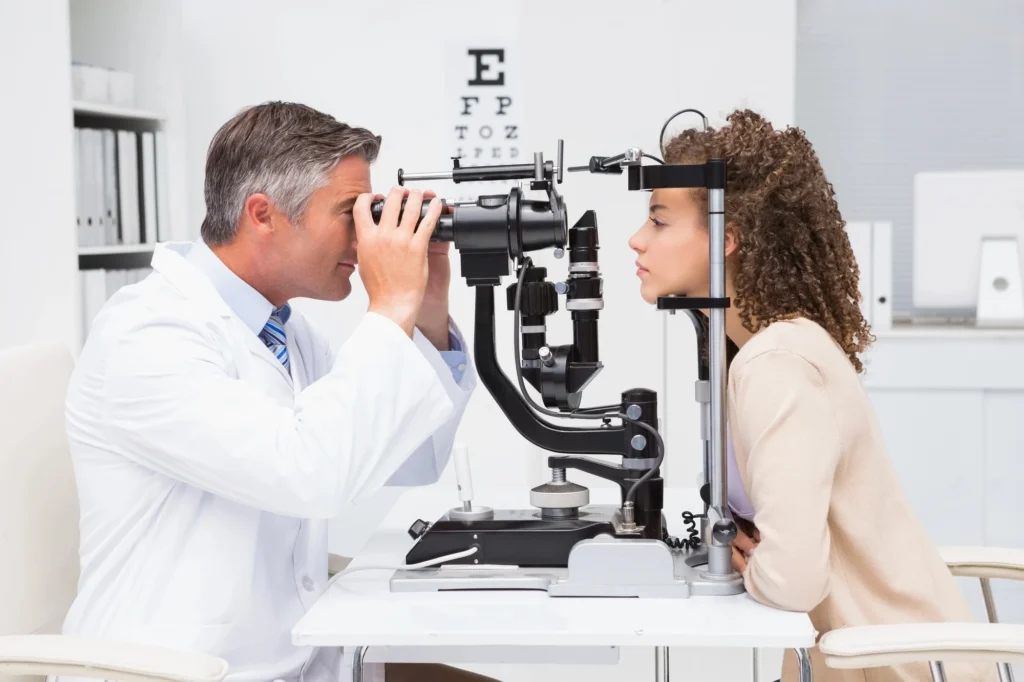
Let’s face it: life in Coeur d’Alene isn’t slowing down for anyone. Between hustling at work, keeping up with the family, and trying to steal a few minutes for yourself, finding time for an eye exam usually falls to the bottom of the pile. If you’re like most professionals, taking a weekday off for a routine eye appointment isn’t just inconvenient—it’s borderline impossible. That’s where **Eye Pros gives you a competitive edge, offering same-day eye exams and weekend appointments that actually fit your reality**. Traditional clinics? They’re notorious for long waits and limited schedules, making your life harder than it needs to be. Show up at Eye Pros, though, and you’re looking at a smarter business model—one built around the customer’s demanding schedule, not the other way around. Same-Day and Weekend Scheduling: Designed for Working Pros When every hour counts, being able to book an appointment the same day you call is a major advantage. Whether you break your glasses, run out of contacts, or notice a sudden change in your vision, Eye Pros makes sure you don’t have to sit on your hands waiting weeks for help. That flexibility extends to Saturdays, too. Think about it: working professionals don’t need to burn PTO just to update a prescription, parents don’t have to reorganize their workweek, and even college students with packed schedules can finally fit in an eye exam. That’s risk mitigation—because when healthcare is accessible, your team (and your family) stay ahead of problems. Efficiency Is the Standard—Not the Exception Unlike old-school clinics with endless waits and drawn-out processes, Eye Pros respects your limited time. Expect short wait times and a staff that understands the value of moving efficiently without trading off quality. You walk in, get a thorough exam using up-to-date equipment, and have your questions answered on the spot. No one’s rushing you out the door, but you’re never left waiting, either. Leave with Results—And Your Eyewear—on the Same Day Here’s a key business advantage: after your exam, you’ll leave with your updated prescription immediately. Our in-house partner EyeMart Express means you can select new glasses or contacts and get them the same day. **No return trips. No unnecessary delays.** For busy professionals, that’s a value proposition you can bank on. A Business Decision That Just Makes Sense In today’s world, convenience isn’t a luxury—it’s a requirement. Eye Pros structured their offices around that truth. By offering same-day, walk-in, and Saturday appointments, they empower working adults to prioritize their eye health without forcing productivity or family life to take a back seat. Here in Kootenai County, that’s why more and more people are choosing Eye Pros. The service is efficient, flexible, and tailored to real human schedules—so you can keep your eyes (and your business) focused on what matters most. In emergency situations—like an eye infection, injury, or sudden vision change—walk-in exams can be a real lifesaver. Instead of stressing about availability, you can head straight to Eye Pros and get the help you need right away. Ready to see the difference for yourself? Whether you’re boating on Lake Coeur d’Alene, hiking Tubbs Hill, or running errands near Costco on Highway 95, your eye health shouldn’t slow you down. Book your eye exam at Eye Pros Coeur d’Alene today and experience how convenient, thorough, and stress-free eye care can be.
Welcome, Coeur d’Alene! Meet Your New Local Eye Care Experts at Eye Pros

Welcome, Coeur d’Alene! When it comes to protecting your family’s vision, finding the right provider has never been more important. That’s why we’re thrilled to announce that Eye Pros Coeur d’Alene has officially opened its doors — bringing the same trusted, high-quality care Idaho families have relied on for years right to your neighborhood. Whether you’re due for a comprehensive eye exam, need new contact lenses, or require treatment for an eye condition, our team is ready to provide the compassionate, professional care you deserve. A Vision That Started with One Doctor’s Dream Eye Pros was founded in 2009 by Dr. Lavar Kofoed, a dedicated optometrist who understood firsthand how challenging it could be to balance excellent patient care with the daily demands of running a practice. Driven by a desire to create something better, he envisioned a practice group that would allow doctors to focus entirely on their patients—supported by a professional administrative team to handle everything else. That vision has flourished. What began as one office has now grown to 11 locations across Idaho and Utah, with more than 25 doctors and 60 team members. As the majority owner and CEO of Eye Pros, Dr. Kofoed continues to lead the organization with a deep commitment to patient-centered care, innovation, and community involvement. Dr. Kofoed has practiced optometry since 1996 and holds degrees from Brigham Young University and Pacific University College of Optometry. He is an active member of the Idaho Optometric Physicians (IOP), Utah Optometric Physicians Association, and the American Optometric Association (AOA). His expertise includes co-managing surgical procedures such as LASIK, PRK, and cataract surgery, and he frequently consults for national optometric groups. Beyond his professional life, Dr. Kofoed values family above all. Married with 11 children and a growing number of grandchildren, he spends much of his spare time with his family performing as Kofoed Family Music. His devotion to faith, family, and freedom mirrors the core values that shape Eye Pros today. Now, that same dedication to quality and community is coming to Coeur d’Alene, Idaho—and we couldn’t be prouder to grow our Eye Pros family here. Introducing Dr. Jared Lambert – Your Coeur d’Alene Optometrist Leading the way at our new Coeur d’Alene office is Dr. Jared Lambert, a proud local who grew up right here in North Idaho. Dr. Lambert is deeply connected to the Coeur d’Alene community and is passionate about giving back to the place that shaped his journey. His academic path began at North Idaho College and continued at the University of Idaho, where he discovered his passion for eye health while working in a research lab studying zebrafish eye development and immune systems. He earned his Bachelor of Science in Biology with a minor in Spanish before pursuing his Doctor of Optometry degree at Pacific University, where he refined his clinical skills and developed a well-rounded, patient-focused approach to care. Dr. Lambert’s expertise includes specialty contact lenses, glaucoma management, diabetic retinopathy, macular degeneration, and a range of other ocular diseases. His ability to combine medical precision with genuine compassion helps patients feel understood and well cared for. When he’s not in the clinic, Dr. Lambert embraces all that Coeur d’Alene has to offer—whether it’s fishing, camping, catching a baseball game, or enjoying a relaxing round of golf. His friendly, down-to-earth nature makes him the perfect fit to bring Eye Pros’ trusted care to the Coeur d’Alene community. Essentials of Eye Care in Coeur d’Alene Living in Coeur d’Alene means being surrounded by stunning natural beauty—the glittering lake, scenic trails of Tubbs Hill, and the great outdoors at every turn. But these same activities can present unique challenges for your vision. The reflection of sunlight on the water increases UV exposure, and seasonal allergies often cause dryness and irritation. Combined with today’s increased screen time from work, school, and entertainment, many Coeur d’Alene residents are noticing the need for a reliable, long-term eye care partner. That’s where Eye Pros Coeur d’Alene comes in. Our mission is simple: to deliver personalized, modern, and compassionate eye care for every stage of life. More Than a Clinic—A Community Vision Partner Eye Pros is more than just a place to get your eyes checked. It’s a community-focused vision center where families can find trusted care, advanced technology, and genuine connection. From children receiving their first eye exams to adults managing dry eye or glaucoma, our team is committed to helping every patient achieve their best possible vision. We combine the latest diagnostic technology with a warm, family-friendly environment—because we believe quality eye care should be both precise and personal. At Eye Pros, every appointment is an opportunity to listen, educate, and build lasting relationships. That’s what sets us apart in Coeur d’Alene. Comprehensive Services You Can Count On Our clinic offers a full range of services to meet the diverse vision needs of your household, including: Comprehensive eye exams to detect vision changes and monitor overall eye health Pediatric eye care to ensure vision issues don’t interfere with learning or development Contact lens fittings designed for comfort and clarity Prescription eyeglasses that combine clear vision with stylish frames Treatment for dry eye, allergies, and infections Advanced screenings for glaucoma, macular degeneration, and cataracts When you visit Eye Pros Coeur d’Alene, you can rest assured your vision is in expert hands. Why Coeur d’Alene Families Choose Eye Pros For years, families across Idaho have trusted Eye Pros to care for their eyes—and now Coeur d’Alene families can experience that same level of excellence. What makes us different? Community-first care. We treat our patients like family and provide the same level of care we’d want for our own loved ones. Advanced technology. We use modern imaging and diagnostic tools to detect issues early and keep your eyes healthy for years to come. Personalized treatment. No two patients are alike, and neither are their eyes. We tailor every care plan to fit your lifestyle and needs. Eye Care for Every Age Good vision is essential at
Is It Time for Reading Glasses? Early Signs for Spanish Fork Adults

If you’ve started holding your phone a little farther away or squinting to read a menu at your favorite Spanish Fork café, you’re not alone. Around age 40, many adults begin to notice subtle but frustrating changes in their near vision. It’s a normal part of aging and one of the clearest early signs that it might be time for reading glasses. Presbyopia, the age-related loss of near focusing ability, affects nearly everyone eventually. And while it may sound like a big shift, recognizing the symptoms early can help you adjust with confidence and clarity. At Eye Pros in Spanish Fork, we help adults spot the signs of presbyopia early and find the right solution—whether that’s over-the-counter readers, prescription glasses, or other customized options. If you’re wondering whether your eyes are just tired—or if you really do need reading glasses—this guide will help you decide. What Is Presbyopia—and Why Does It Happen? Presbyopia is a common, age-related vision condition that makes it harder to focus on things up close. It usually begins to show up in your early to mid-40s, even if you’ve never worn glasses before. If you’ve found yourself holding reading materials at arm’s length or needing brighter light to see small print, presbyopia is likely the reason. So what’s actually happening? As we age, the lens inside the eye gradually becomes less flexible. When that flexibility decreases, your eye can’t adjust as easily to focus on nearby objects—especially in low lighting or after a long day of screen use. This isn’t a disease, and it doesn’t mean anything is “wrong” with your eyes—it’s simply a natural part of getting older. While reading glasses are one of the most common ways to manage presbyopia, they’re not the only option. The key is recognizing the signs early and working with a trusted eye doctor—like the team at Eye Pros in Spanish Fork—to find the best solution for your lifestyle. Early Signs You May Need Reading Glasses Presbyopia doesn’t happen overnight—it creeps in slowly, and many adults don’t realize what’s going on until the frustration builds. If you’ve started noticing any of these changes in your day-to-day routine, it might be time to consider reading glasses: You hold books, phones, or menus farther away to bring text into focus. You need more light than usual to read comfortably, especially in dim settings. Small print looks blurry up close, but distant objects are still clear. You get frequent headaches or eye strain after reading or using a screen. You find yourself squinting to see details up close—even with perfect distance vision. Reading feels more tiring than it used to, and you lose focus more quickly. These symptoms are subtle at first, but they often become more disruptive over time. If any of them sound familiar, don’t wait for things to get worse. A quick visit to an eye doctor can confirm whether reading glasses are the right solution—or if another option would suit you better. We make it easy to get clear answers and personalized recommendations—so you can stop guessing and start seeing comfortably again. Are Reading Glasses My Only Option? Reading glasses are the most common solution for presbyopia—but they’re far from the only one. Depending on your lifestyle, vision needs, and whether you already wear glasses or contact lenses, there are several options available to help you see clearly up close. Here’s a quick breakdown of the most popular choices: Over-the-Counter Readers: Affordable and easy to find, these work well for mild, occasional use—but they don’t correct differences between your eyes or provide a custom fit. Prescription Reading Glasses: Designed specifically for your eyes, these offer sharper vision and better comfort, especially if one eye is stronger than the other. Bifocals and Progressive Lenses: Ideal for people who need help seeing both near and far, these combine multiple prescriptions in one lens—no need to switch between glasses. Multifocal Contact Lenses: If you prefer not to wear glasses at all, these contacts provide clear vision at multiple distances, including reading. Monovision Contacts: One eye is corrected for distance, the other for near—an option some people adapt to easily with guidance from their eye doctor. Choosing the right solution depends on how you use your vision every day—whether you’re reading books, working at a screen, or driving. That’s why a personalized eye exam is the best way to explore your options and make a decision that fits your lifestyle. Why Regular Eye Exams Still Matter Even if you’ve started using reading glasses, that doesn’t mean your vision journey is on autopilot. As your eyes continue to change over time, regular eye exams play a key role in keeping your sight sharp and your eyes healthy—especially after age 40. Presbyopia isn’t the only concern as we get older. An annual exam can also detect early signs of other eye conditions like glaucoma, cataracts, or macular degeneration—many of which develop silently before noticeable symptoms appear. A professional eye doctor can also ensure that your reading correction is accurate and comfortable. If your drugstore readers aren’t doing the trick anymore or if you’re switching glasses constantly, it might be time for a custom prescription that fits your specific needs. Your vision is constantly evolving. A yearly eye exam is the best way to keep pace with those changes and protect your long-term eye health with confidence and clarity. FAQs About Reading Glasses & Age-Related Vision How do I know what strength reading glasses to get? The right strength depends on your age, vision needs, and whether you already wear corrective lenses. Many people start with +1.00 to +1.50 diopters in their early 40s, but a proper eye exam is the most accurate way to determine the correct strength—especially if your eyes have different needs. What is the use of reading glasses? Reading glasses are designed to help you see clearly up close. They correct presbyopia, a natural condition that makes it harder to focus on near objects as you age. Whether you’re reading
Common Vision Issues in Children Around Twin Falls—And How to Catch Them Early
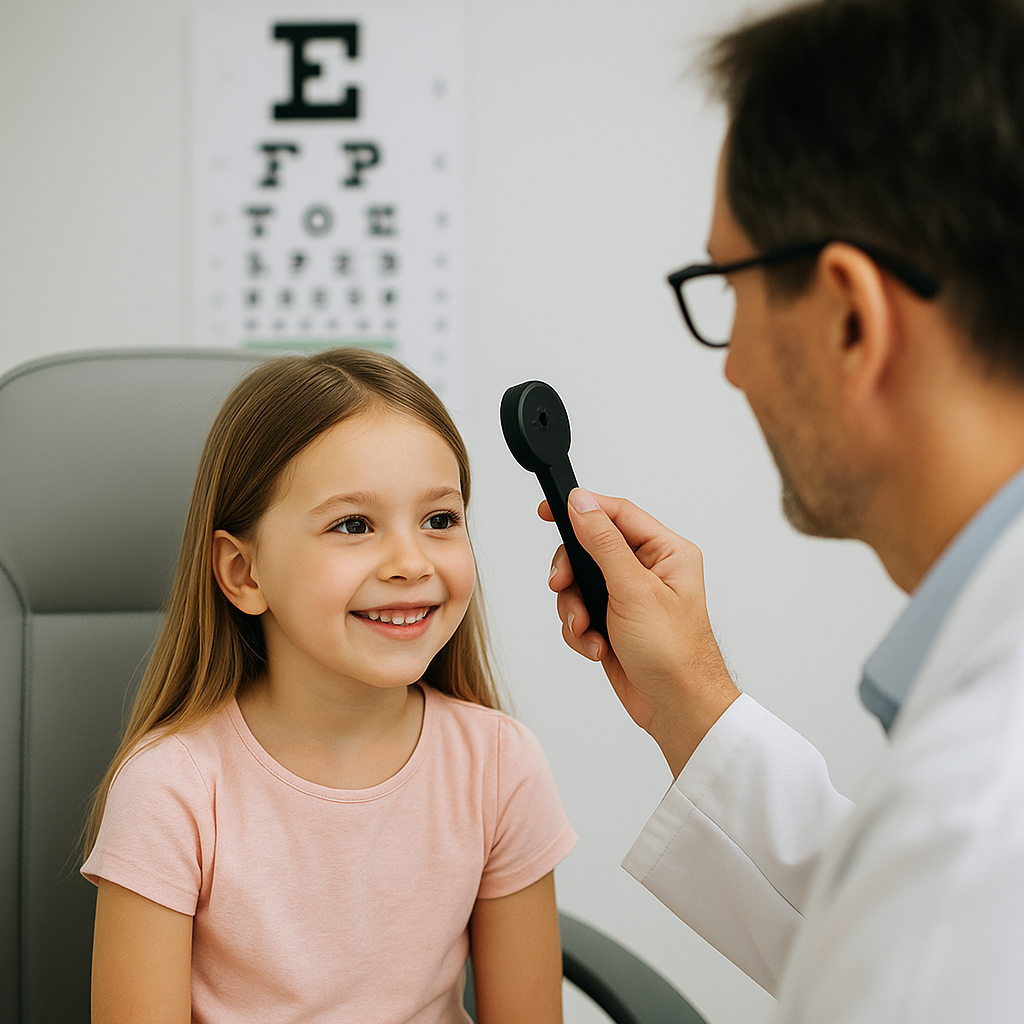
When it comes to a child’s development, clear vision plays a bigger role than most parents realize. From learning in the classroom to building confidence on the playground, eyesight affects everything. But many common vision issues in children go unnoticed—especially in the early years when kids don’t yet know how to describe what’s wrong. In Twin Falls, where school and sports are a big part of daily life, undetected vision problems can lead to unnecessary struggles with reading, focus, and even behavior. That’s why early awareness and regular eye exams are so important. At Eye Pros in Twin Falls, we specialize in identifying vision issues early—before they begin to interfere with a child’s learning and development. In this guide, we’ll walk you through the most common pediatric eye problems, the warning signs to watch for, and how to make sure your child sees the world clearly from the start. Why Vision Health is Essential for Kids Children learn through their eyes long before they can read or write. In fact, experts estimate that up to 80% of a child’s learning is visual—making healthy eyesight one of the most critical pieces of early development. From recognizing letters on a board to catching a ball at recess, clear vision supports everything from academic success to social confidence. When common vision issues go undetected, kids may struggle to keep up in school, avoid reading altogether, or act out from frustration. In some cases, vision problems are even misdiagnosed as learning disabilities or attention disorders, when the root cause is actually visual. The good news? Most childhood vision issues can be treated effectively—especially when caught early. Regular eye exams ensure your child has the visual tools they need to succeed and thrive. At Eye Pros in Twin Falls, we take a proactive approach to pediatric eye care, helping families spot potential problems before they interfere with learning or everyday life. Because every child deserves the chance to see clearly—and confidently. Common Vision Issues in Children Many children in Twin Falls experience vision challenges that aren’t always easy to spot—especially at a young age. Kids often assume their vision is normal, even when they’re struggling to see clearly. That’s why understanding the most common vision issues in children is key to catching them early. Here are the top conditions parents should know about: Myopia (Nearsightedness): Your child can see things up close but struggles with objects far away, like classroom boards or street signs. Hyperopia (Farsightedness): Distant objects are clear, but close-up tasks like reading or drawing may cause eye strain or blurry vision. Astigmatism: Caused by an irregularly shaped cornea, this can lead to blurry or distorted vision at all distances. Amblyopia (Lazy Eye): One eye has weaker vision than the other, often developing in early childhood. If left untreated, it can lead to long-term vision loss. Strabismus (Crossed Eyes): The eyes are misaligned and may turn inward, outward, or upward, affecting depth perception and coordination. Convergence Insufficiency: A problem with the way the eyes work together when focusing on near objects, leading to double vision or reading difficulties. Each of these conditions can interfere with your child’s ability to learn, play, and interact confidently. That’s why regular checkups with an experienced eye doctor—like those at Eye Pros in Twin Falls—are essential to keeping young eyes healthy and strong. Warning Signs Parents Shouldn’t Ignore Since kids often don’t realize their vision is off, the clues usually show up in their behavior—not their words. That’s why it’s important for parents to stay alert for early indicators of common vision issues, especially during the preschool and elementary years. Watch for these telltale signs that your child may be struggling to see clearly: Frequent squinting or tilting the head Holding books or tablets too close to the face Sitting too close to the TV or classroom board Rubbing eyes often, especially after reading or screen time Complaining of headaches or tired eyes Avoiding reading, puzzles, or other close-up tasks Trouble concentrating in school or following instructions Covering one eye while focusing While these behaviors might seem subtle—or even normal—repeating patterns can indicate an underlying vision problem. The earlier you act, the easier it is to correct the issue and help your child thrive both in and out of the classroom. If you’re noticing any of these signs, it’s time to schedule a pediatric eye exam at Eye Pros in Twin Falls. Our team specializes in catching and treating vision problems before they become long-term obstacles. Why Early Eye Exams Matter Many parents assume school vision screenings are enough—but these quick checks often miss the subtle common vision issues that can impact a child’s learning and development. While screenings may detect nearsightedness, they don’t assess eye coordination, depth perception, or focusing ability—all of which are essential for reading, writing, and classroom performance. That’s why a comprehensive eye exam with a qualified eye doctor is so important, especially before your child starts school. Early exams can catch problems that may not cause obvious symptoms yet but can still affect how your child sees the world. The American Optometric Association recommends that children have: Their first eye exam at 6 to 12 months old Another exam at age 3 A full eye exam before starting kindergarten Annual checkups during school years, especially if they already wear glasses or show symptoms At Eye Pros in Twin Falls, we tailor pediatric eye exams to be age-appropriate, comfortable, and thorough. Catching issues early means we can correct them with glasses, therapy, or other treatments—often preventing long-term challenges in school and daily life. Protecting your child’s vision doesn’t just improve how they see—it can transform how they learn, behave, and feel about themselves. What to Expect During a Pediatric Eye Exam If you’ve never taken your child to the eye doctor, the idea of an eye exam might seem a little intimidating—for both of you. But at Eye Pros in Twin Falls, we make the process as simple and stress-free as possible. Our
How to Take Care for Your Eyes During Pocatello’s Cold and Windy Winters

Pocatello winters are no joke. With biting winds, freezing temperatures, and dry indoor heat, your skin isn’t the only thing that takes a hit—your eyes do too. From stinging dryness to excessive tearing, the cold season brings a wave of discomfort that many locals simply try to power through. But your eyes deserve better. Knowing how to take care of your eyes during Pocatello’s harsh winter months can mean the difference between constantly rubbing irritated eyes and seeing comfortably all season long. Cold air, wind, and low humidity strip away natural moisture, making your eyes more vulnerable to irritation, infection, and even vision changes. At Eye Pros in Pocatello, we help patients protect their eyes year-round, especially when winter weather becomes a daily challenge. In this guide, you’ll learn what winter does to your vision, how to prevent common seasonal issues, and when it’s time to see a trusted eye doctor. Why Winter Weather is Tough on Your Eyes Winter in Pocatello doesn’t just chill the air—it dries it out. Cold temperatures hold less moisture, and when combined with strong winds and indoor heating, the result is an environment that’s incredibly harsh on your eyes. When you step outside, freezing wind can strip away the natural tear film that keeps your eyes lubricated. Indoors, the dry heat from furnaces and heaters only makes things worse by pulling moisture out of the air—and your eyes. Even simple things like reading, working at a screen, or driving can start to feel uncomfortable. Common effects include: Dryness and irritation from low humidity Redness or stinging due to tear film evaporation Watery eyes caused by reflex tearing from cold wind Blurred vision or sensitivity to light when the eyes are inflamed Higher risk of eye infections when the eyes are already dry or irritated The good news? You don’t have to suffer through it. Learning how to take care of your eyes during winter helps you stay ahead of the discomfort—and keeps your vision clear even when the weather isn’t. Top Winter Eye Problems to Watch Out For Your eyes react to cold, dry weather in more ways than one—and not all symptoms are obvious at first. If you’re spending time outdoors in Pocatello’s winter air or indoors with dry heat, keep an eye out for these common seasonal issues: Dry Eyes: The most common winter complaint. Cold wind and indoor heat can cause burning, stinging, or a gritty sensation. Redness and Irritation: Lack of moisture makes the eyes inflamed and bloodshot, especially after time outside. Excessive Tearing: Ironically, dry eyes can lead to watery eyes. Your body produces extra tears in response to dryness, but they don’t offer lasting relief. Light Sensitivity: Bright winter sunlight, especially with snow glare, can make your eyes overly sensitive and uncomfortable. Blurred Vision: Dry, irritated eyes can temporarily affect how clearly you see. Increased Risk of Infections: Dry eye surfaces are more vulnerable to bacteria, leading to higher chances of conjunctivitis or other infections. If you notice these symptoms persisting or worsening, it’s a sign you may need to take care of your eyes more proactively—or see an eye doctor for a professional evaluation. How to Take Care for Your Eyes in Cold, Windy Weather When it comes to winter, preparation is everything—and that includes your eyes. Fortunately, a few simple habits can go a long way in keeping your vision clear and your eyes comfortable during Pocatello’s coldest months. Here’s how to take care of your eyes when the wind and chill kick in: Wear sunglasses or goggles outdoors: Cold wind and UV rays can both dry and damage your eyes. Choose wraparound styles for maximum protection. Hydrate from the inside out: Drink plenty of water throughout the day to support healthy tear production. Avoid direct heat: Sitting too close to heaters or car vents can worsen dryness. Redirect airflow away from your face whenever possible. Use a humidifier indoors: Boosting indoor humidity can reduce eye dryness caused by heating systems. Protect your eyes on windy days: A scarf or face wrap can help block sharp wind gusts if you don’t have protective eyewear. These strategies aren’t just for comfort—they also protect your eye health. Winter exposure without precautions can lead to recurring issues that worsen over time, so take a few extra seconds each day to prioritize your vision. Indoor Eye Care Habits That Make a Difference When the temperatures drop, most of us spend more time indoors—but that doesn’t mean your eyes are off the hook. In fact, dry heat, screen time, and poor indoor air quality can make winter eye irritation even worse inside than out. To truly take care for your eyes during Pocatello’s cold months, you’ll want to make a few small changes to your indoor routine: Limit screen time when possible: Long hours in front of phones, TVs, or laptops can reduce your blink rate and dry out your eyes. Use the 20-20-20 rule: every 20 minutes, look at something 20 feet away for 20 seconds. Adjust screen brightness and reduce glare: Especially at night, harsh lighting can lead to eye fatigue. Use anti-glare filters or blue light settings to reduce strain. Use a humidifier in dry rooms: Bedrooms and home offices often need extra moisture in the air to keep eyes from drying out. Take regular eye breaks: Whether you’re working remotely or helping kids with homework, take a few minutes every hour to rest your eyes and rehydrate. Don’t forget your contact lens care: If you wear lenses, proper hygiene and moisture are even more important during dry months. Use rewetting drops as needed and always clean your lenses properly. At Eye Pros in Pocatello, we help patients build winter-friendly routines that keep their eyes healthy no matter how long the cold sticks around. With a few small adjustments, you can enjoy warmth and comfort—without sacrificing your vision. When to See an Eye Doctor in Pocatello While most winter eye issues can be managed with good habits
A Beginner’s Guide to Contact Lenses for Ogden First-Timers

Thinking about ditching your glasses and trying contact lenses for the first time? You’re not alone. Whether it’s for convenience, comfort, or just a change in style, more people in Ogden are making the switch to contacts—and with the right guidance, it’s easier than you think. If you’re unsure where to start, don’t worry. This beginner-friendly guide to contact lenses covers everything you need to know—from choosing the right type of lens to handling them safely and comfortably. At Eye Pros in Ogden, we’ve helped hundreds of first-time wearers transition to contacts with confidence, and we’re here to help you do the same. Ready to see the world more clearly—without the frames? Let’s walk through what to expect and how to make your first contact lens experience a smooth one. What Are Contact Lenses and How Do They Work? Contact lenses are thin, curved discs made of soft or rigid materials that rest directly on the surface of your eye. Like glasses, they correct refractive errors—such as nearsightedness, farsightedness, astigmatism, or presbyopia—by helping your eye focus light correctly onto the retina. The main difference? Contact lenses move with your eyes and provide a wider field of vision without the frames. They’re nearly invisible, won’t fog up, and allow for more freedom in daily activities like sports or exercise. Here’s how they work in simple terms: Light enters your eye through the contact lens The lens adjusts the path of the light so it lands properly on the retina This results in clear, sharp vision—just like glasses, but without the bulk At Eye Pros in Ogden, we often recommend contact lenses to first-timers who are looking for convenience, flexibility, or just a new way to see the world. And with so many types available today, it’s easier than ever to find a perfect fit for your vision needs and lifestyle. Types of Contact Lenses: What’s Right for You? Choosing your first pair of contact lenses isn’t a one-size-fits-all decision. There are several types available, each designed to match different vision needs, lifestyles, and comfort preferences. At Eye Pros in Ogden, we help first-timers find the right fit by starting with a comprehensive contact lens exam. Here’s a quick breakdown of the most common types of lenses: Daily Disposables: These are worn once and tossed at the end of the day—ideal for busy people who want a low-maintenance option. Bi-weekly or Monthly Lenses: These are worn for a set number of days, removed nightly, and cleaned daily. They’re more cost-effective but require a consistent care routine. Soft Contact Lenses: Made of flexible, breathable material, these are great for comfort and are typically preferred by beginners. Rigid Gas Permeable (RGP) Lenses: These offer sharper vision and durability but require a longer adjustment period. Toric Lenses: Specifically designed for people with astigmatism, these lenses correct uneven curvature of the eye. Multifocal Lenses: Ideal for people with presbyopia, these lenses allow for clear vision at multiple distances—no reading glasses required. Colored or Cosmetic Lenses: Want to change your eye color while correcting vision? These lenses offer both function and flair. The best lens for you will depend on your prescription, lifestyle, and how often you plan to wear them. During your fitting at Eye Pros Ogden, our team will help you test different options and explain the pros and cons so you can make an informed choice. First-Time Tips: Inserting, Removing & Adapting Wearing contact lenses for the first time can feel a little intimidating—but with practice and a few key tips, it quickly becomes second nature. At Eye Pros in Ogden, we walk every first-timer through the process step by step, making sure you feel confident before you leave the clinic. What to Know as You Begin Inserting Your Contact Lenses Wash your hands with soap and water, then dry them thoroughly. Place the lens on the tip of your index finger. It should look like a smooth bowl—if the edges flare out, it’s inside out. Hold your upper eyelid with one hand and pull down your lower lid with the other. Gently place the lens on your eye and blink a few times to settle it. Removing Your Lenses Again, wash and dry your hands first. Look up and gently pull down your lower eyelid. Use your index finger and thumb to lightly pinch the lens and remove it. Clean and store it in a fresh solution unless you’re using daily disposables. Getting Used to the Feeling It’s completely normal for your eyes to feel slightly irritated or sensitive during your first few days. Most people adapt within a week. If discomfort lasts or your eyes look red or watery, take out the lenses and call your eye doctor right away. Common Troubleshooting Tips If your lens feels uncomfortable, it may be inside out or have debris on it—remove, rinse, and try again. Always start with the same eye to avoid mixing up lenses. Never use tap water to clean or store your contacts. With patience and a proper routine, wearing contacts will soon feel as easy as brushing your teeth. And if you ever have questions, our Ogden team is just a call away. Do’s and Don’ts of Contact Lens Care Taking care of your contact lenses isn’t just about convenience—it’s crucial for keeping your eyes healthy, comfortable, and free from infection. For first-timers in Ogden, a few simple habits can make all the difference between a great experience and one that leads to irritation or worse. Essential Do’s and Don’ts Guide Do: Wash and dry your hands before handling lenses every time. Use fresh contact lens solution daily—never top off old liquid. Clean your lens case regularly and replace it every 1–3 months. Follow the replacement schedule for your specific lens type. Take lenses out before sleeping unless your eye doctor says otherwise. Stick to your follow-up appointments at Eye Pros in Ogden to ensure your eyes stay healthy. Don’t: Don’t use tap water to rinse or store lenses. Don’t
Why Kids in Nampa Should Have an Eye Exam Before Starting School
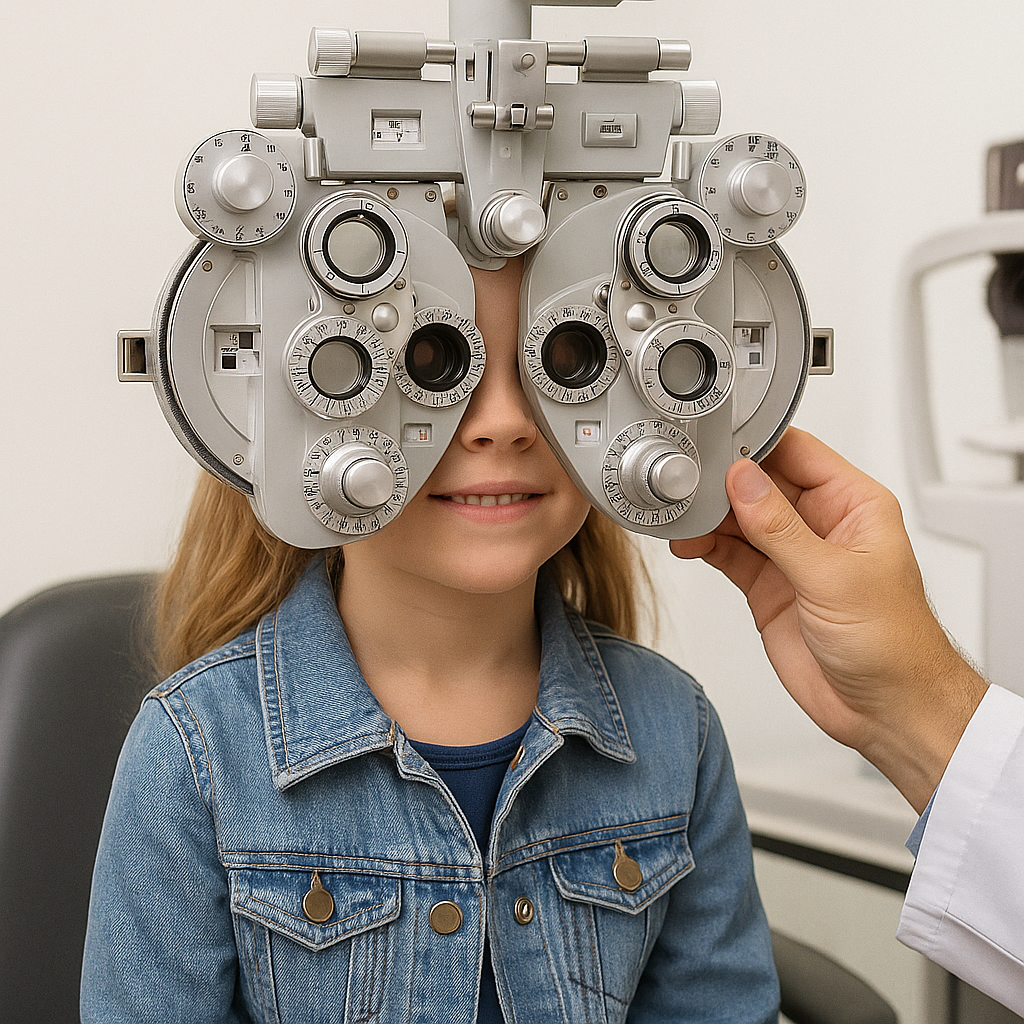
Back-to-school season is full of checklists—new shoes, school supplies, and doctor’s visits. But there’s one essential item many parents in Nampa often overlook: a comprehensive eye exam. For children, clear vision is more than just being able to read the board—it’s critical to learning, attention, and overall confidence in the classroom. The truth is, many vision issues in kids go unnoticed. They might not complain or even realize something is wrong. That’s why scheduling an eye exam before the first day of school is one of the smartest things you can do to set your child up for success. At Eye Pros in Nampa, we specialize in family-friendly eye care that makes kids feel comfortable and parents feel confident. In this guide, we’ll walk you through why early exams matter, how to spot signs of vision trouble, and what to expect when you visit your local eye doctor. How Vision Affects Learning and Development It’s easy to assume a child would speak up if they couldn’t see clearly—but that’s rarely the case. Kids often don’t know what “normal” vision looks like, so they adapt in ways that can quietly hinder their academic and social growth. Roughly 80% of learning in a classroom is visual, from reading and writing to watching the teacher and recognizing symbols. When a child has an undiagnosed vision problem, they may struggle with tasks that require focus, leading to frustration, behavioral issues, or even being misdiagnosed with attention disorders. Vision problems can cause: Difficulty reading or losing their place on the page Poor hand-eye coordination in sports or art Fatigue or headaches after screen time or homework Difficulty paying attention or following instructions What looks like a learning difficulty might actually be an eye issue. That’s why our team at Eye Pros in Nampa encourages parents to schedule an annual eye exam—especially before school starts. Identifying and correcting vision issues early helps your child feel more confident and prepared in the classroom from day one. Signs Your Child May Need an Eye Exam Children don’t always have the words to explain what they’re experiencing—especially when it comes to their vision. Many simply adapt to blurry or strained sight without realizing there’s a problem. That’s why it’s important for parents to watch for subtle signs that could indicate it’s time for an eye exam. Here are some common red flags: Squinting or covering one eye to see better Holding books or screens too close to their face Frequently losing their place while reading Complaining of headaches or tired eyes Rubbing their eyes often, even when not sleepy Difficulty focusing in class or avoiding reading Sitting too close to the TV Trouble with hand-eye coordination during play or sports These symptoms may not always seem urgent, but they can significantly impact a child’s ability to learn and interact with confidence. At Eye Pros in Nampa, our experienced eye doctors can spot issues early and help ensure your child sees clearly before they step back into the classroom. Why a Pre-School-Year Eye Exam Is the Best Timing The start of a new school year is more than just a fresh set of supplies—it’s a chance to give your child the tools they need to thrive. Scheduling a comprehensive eye exam before school begins ensures your child walks into the classroom with clear vision and confidence. Unlike school vision screenings, which are limited and often miss important issues, a full exam with an eye doctor checks for a wide range of visual skills—like depth perception, eye tracking, and focusing ability. Identifying and correcting problems before classes start means fewer distractions, less frustration, and better academic performance from day one. Here’s why summer or early fall is the ideal time for a pediatric eye exam: You’ll avoid the back-to-school rush for appointments Any needed glasses or treatments can be in place before classes begin Your child can adjust to new vision aids without pressure It eliminates mid-semester disruptions due to undiagnosed issues At Eye Pros in Nampa, we help parents stay ahead of potential vision problems with age-appropriate exams that fit your family’s schedule. It’s one of the simplest—and smartest—ways to start the school year right. What Happens During a Pediatric Eye Exam For many parents (and kids), the idea of an eye exam can feel intimidating—especially if it’s the first time. But at Eye Pros in Nampa, we make the experience simple, gentle, and even fun for young patients. Knowing what to expect can help ease any nerves and make the visit smooth for everyone. A pediatric eye exam is tailored to your child’s age and developmental stage. For younger children, the tests are playful and engaging, using shapes or pictures instead of letters. Older kids may move on to a traditional eye chart, along with more detailed testing as needed. Here’s what typically happens during a visit: Medical and vision history review to understand any symptoms or concerns Visual acuity testing to check how clearly your child sees near and far Eye movement and tracking tests to evaluate how well their eyes work together Depth perception and focusing assessments A look at eye health using gentle, non-invasive tools to examine the inside of the eye Discussion of results and whether glasses, vision therapy, or a follow-up is needed The entire process is designed to be child-friendly and stress-free. Our goal is to help your child feel relaxed and confident while ensuring they receive the care they need from a compassionate, experienced eye doctor. FAQs About Children’s Eye Exams At what age should a child have their first eye exam? Most children should have their first comprehensive eye exam at around 6 months of age, followed by another at age 3, and again before starting kindergarten. After that, annual checkups are recommended, especially during school years when vision can change quickly. Are school vision screenings enough? While school screenings can catch some basic vision problems, they don’t replace a full exam by an eye doctor. These screenings usually only
The Busy Parent’s Guide to Eye Care in Meridian

Between school drop-offs, soccer practice, and last-minute grocery runs, eye care can easily fall to the bottom of a busy parent’s to-do list. But just like regular checkups with a pediatrician or dentist, consistent eye care is essential—especially for growing kids whose vision plays a huge role in how they learn, play, and engage with the world. At Eye Pros in Meridian, we understand that finding time for appointments can feel impossible when your calendar’s already overflowing. That’s why we’re making eye care easier, faster, and more family-friendly for parents who want to stay on top of their child’s health without adding stress to their day. This guide breaks down everything you need to know—from spotting early signs of vision problems to making the most of your visit with a trusted eye doctor. Because when it comes to your family’s vision, simple steps can make a big difference. Why Eye Care Matters for the Whole Family Vision problems don’t always come with obvious warning signs—especially in kids. A child may not realize their eyes are working harder than they should, and adults often chalk up blurry vision or eye fatigue to stress or screen time. But left unchecked, these issues can impact everything from school performance to work productivity and overall quality of life. Routine eye care helps detect problems early, when they’re easiest to manage or correct. For children, clear vision supports better concentration, confidence in the classroom, and even coordination in sports. For parents, regular exams can catch subtle changes that may indicate eye strain, aging vision, or underlying health conditions. That’s why at Eye Pros in Meridian, we treat eye care as a family affair. Our experienced eye doctors provide personalized care for every age—so whether you’re booking your toddler’s first eye exam or updating your own prescription, you can count on us to keep your whole household seeing clearly. Eye Care Tips for Busy Schedules We get it—between juggling work, school, and everything in between, finding time for eye exams can feel impossible. That’s why efficient, low-stress solutions make all the difference for families on the go. Here are a few ways to simplify your routine without sacrificing your family’s eye care: Schedule back-to-back appointments: Many clinics, including Eye Pros in Meridian, offer the option to book multiple family members on the same day to save time. Use online booking and reminders: Digital tools make it easier to schedule, reschedule, or get appointment reminders straight to your phone. Visit during school breaks or early-release days: Maximize convenience by planning around your child’s calendar. Set recurring annual reminders: Treat eye exams like yearly physicals—schedule them at the same time every year to stay consistent. Check your insurance coverage in advance: Knowing what’s covered helps avoid surprises and speeds up the visit. Use patient portals: Access prescriptions, previous exams, and appointment history with just a few clicks. Modern eye care doesn’t have to disrupt your entire day. With the right clinic and a little planning, protecting your family’s vision can fit right into your already-packed schedule. Signs Your Child (or You) Might Need an Eye Exam Vision problems don’t always show up as something obvious like blurry sight. In kids, especially, the signs can be subtle—and easy to miss when life gets busy. The earlier you catch them, the easier it is to correct them and prevent learning or behavior issues tied to poor vision. Watch for these common red flags that may signal it’s time to schedule a visit with an eye doctor: Frequent squinting or tilting the head Holding books, tablets, or phones too close Complaints of headaches or tired eyes Avoiding reading or struggling with schoolwork Rubbing eyes often, even when not tired Sitting too close to the TV Adults aren’t off the hook, either. Blurry vision at the computer, trouble seeing at night, and increasing eye fatigue are all signs that your eyes could use professional attention. If it’s been more than a year since your last eye exam—or you can’t remember when your last one was—it’s time to prioritize your eye care. Choosing the Right Eye Doctor in Meridian Not all eye clinics are created equal—especially when you’re trying to find a provider who can meet your whole family’s needs. From toddlers to teens to busy parents, a good eye doctor doesn’t just check your vision—they understand how to care for people at every stage of life. When looking for the right fit, consider these key factors: Family-friendly atmosphere: Kids do best in a welcoming, low-stress environment. A patient, gentle team can make a huge difference in how your child feels about eye exams. Flexible scheduling options: Look for clinics that offer evening or weekend appointments to help you work around school and work schedules. Comprehensive services: From basic vision tests to more advanced care, your provider should be able to support the needs of each family member in one place. Experience with pediatric and adult care: Not all optometrists specialize in children. Be sure your provider has experience with both young and mature eyes. Efficient, modern tools: Digital records, online appointment booking, and fast check-ins help make your visit smoother—especially when you’re short on time. At Eye Pros in Meridian, we’re proud to offer family-focused eye care designed to be convenient, compassionate, and complete. Our team is experienced in treating all ages, and we’re here to support your family’s vision with expertise you can trust. FAQs About Eye Care for Families How often should kids get eye exams? Most children should have their first comprehensive eye exam around age 3, then again before starting school. After that, yearly checkups are recommended—especially during growth spurts when vision can change quickly. Are school screenings enough to detect vision problems? School screenings are helpful, but they’re not a replacement for a full eye exam. They usually only check for distance vision and can miss issues like eye coordination, depth perception, or farsightedness. A visit to an experienced eye doctor offers a more complete picture
